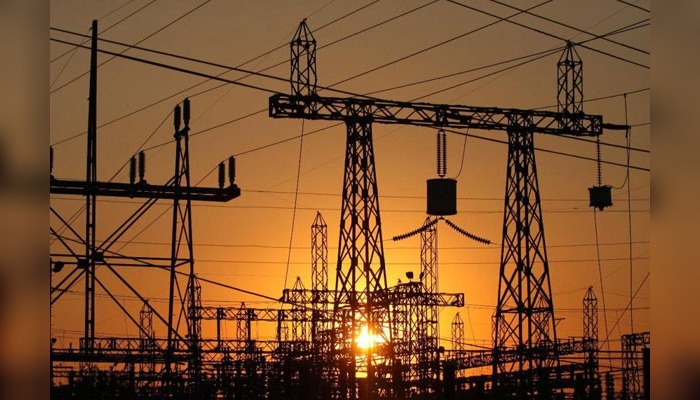In Nigeria, few phrases are more universally understood—or more frustrating—than “NEPA has taken the light.” Despite decades of reform, billions in investment, and a complete restructuring of the power sector, blackouts remain a daily reality for millions. Whether it’s during a thunderstorm, in the middle of a business day, or just as dinner is being prepared, the national grid’s failure is as predictable as it is disruptive.
It is more than a joke, “NEPA” has become a symbol of Nigeria’s enduring electricity crisis—a crisis that has outlived multiple governments, resisted policy shifts, and grown worse for many, even in 2025. The National Electric Power Authority (NEPA) was replaced by PHCN and then unbundled into the Transmission Company of Nigeria (TCN), Generation Companies (GenCos), and Distribution Companies (DisCos). Yet, “NEPA” remains a national symbol of disappointment, shorthand for a system that fails with spectacular consistency.

But beneath the jokes and tired reactions is a serious question: Why does NEPA still cut the power?
Population exceeding capacity
Nigeria, with a population exceeding 220 million, generates only 4,000–5,000 megawatts (MW) of electricity on average. For context, New York City alone consumes more than 11,000 MW daily. South Africa, with about one-third of Nigeria’s population, generates more than 40,000 MW, even amidst its own energy woes.
The World Bank estimates that 85 million Nigerians — nearly 40% — have no access to electricity. Those who do face frequent outages and surging costs.
“It’s almost impossible to run a modern business in Nigeria without a generator,” says Dayo Omotosho, a fashion entrepreneur in Ibadan. “Our electricity grid is broken. Generators are not a luxury — they’re essential.”
Aging Infrastructure Meets Growing Demand
Nigeria’s power infrastructure dates largely to the 1970s and 80s — a skeleton grid built for a much smaller population and economy. Over the decades, investment has lagged behind the explosion in demand.
“One lightning strike in a substation in Kaduna can take out power in five states,” says Laide Adedeji, an energy systems engineer. “There’s no redundancy. The grid is fragile by design.”
Beyond central fragility, transformers leak, wires sag, and equipment is outdated. In the rainy season, water intrusion worsens short-circuits and tripping faults. Some distribution lines, especially 11kV feeders, are fitted with low-rated circuit breakers that trip at the slightest fault. In some cases, rain alone is enough to cut power.
“To avoid explosions or electrocution, we sometimes preemptively shut off power when it rains,” admitted a former PHCN technician. “It’s crude, but it’s safer than letting wet infrastructure spark out.”
Read More:
Tinubu to meet GenCos over N4trn power sector debt
‘Without reliable power, Nigeria’s economy ‘ll remain stuck in slow growth’ – Adesina
Hench Education empowers students to unlocking global opportunities
Ineffective Reforms
In 2013, the Nigerian government privatized its power sector, breaking up the Power Holding Company of Nigeria (PHCN) into several DisCos and GenCos. The goal was to bring efficiency, investment, and accountability.
But the outcome has been fragmentation and finger-pointing.
- DisCos blame TCN for poor transmission.
- GenCos claim they’re not paid for generated power.
- Consumers, meanwhile, pay for power they rarely receive.
“The system is broken at every level,” says Mark Schneider, an energy economist at the World Bank. “And there’s no unified command.”
Weather
As rainy season intensifies, many Nigerians notice a familiar pattern: the lights go out as soon as it starts raining. Why?
- Safety shutdowns to prevent electrocution from fallen wires.
- Low-rated circuit breakers tripping due to line resistance changes.
- Sagging conductors caused by wind and moisture.
- Overloaded transformers failing under additional stress.
Insiders also blame poor grid segmentation and lack of smart sensors to isolate faults.
“In some areas, one minor storm can take down an entire region’s power,” one retired NEPA engineer said. “Meanwhile, rural feeders with higher spacing on 33kV lines may stay on. It depends on luck and line quality.”
Global Comparisons, Local Failures
Nations like Vietnam and India have made remarkable progress in electrification. Vietnam added 30,000 MW in a single decade with clear policies and investment frameworks.
Nigeria, in comparison, has been hamstrung by:
- Foreign exchange instability
- Fuel subsidy mismanagement
- Pipeline vandalism disrupting gas supply
- Chronic underfunding
Despite being a major gas producer, Nigeria suffers frequent gas shortages at power plants — the very heart of its electricity system.
Hidden Cost: Health, Economy, and Human Dignity
The consequences of electricity failure are not just inconvenience — they are economic, educational, and existential.
- Students study by candlelight or local lantern
- Hospitals run surgeries on diesel backup.
- Tech startups relocate to Ghana or Kenya.
“We breathe generator fumes all day,” says Dr. Samuel Ibeji, a pulmonologist in Port Harcourt. “Respiratory illness is rising. It’s no coincidence.”
A 2023 study found that Nigeria may have the highest per capita generator use in the world, resulting in soot pollution and excessive noise levels, particularly in urban areas.
What can be done?
Experts and stakeholders have emphasize the need for urgent reforms that go beyond surface-level fixes. A key priority is significantly increasing investment in off-grid renewable energy solutions, particularly solar mini-grids, to serve rural communities that remain disconnected from the national grid. At the same time, there is a growing call to re-evaluate the country’s electricity privatization framework by conducting thorough performance reviews of the Distribution Companies (DisCos), many of which have struggled to meet service expectations. Infrastructure upgrades are also essential—transformers and circuit breakers, especially those on overloaded urban 11kV lines, require urgent replacement or reinforcement. In addition, the adoption of smart grid technologies, such as real-time monitoring systems, fault detectors, and predictive maintenance tools, could help modernize the aging grid and improve reliability. Lastly, long-term progress will depend on building a regulatory environment that is transparent, ensures consumer protection, and enforces real accountability at every level of the power sector.



